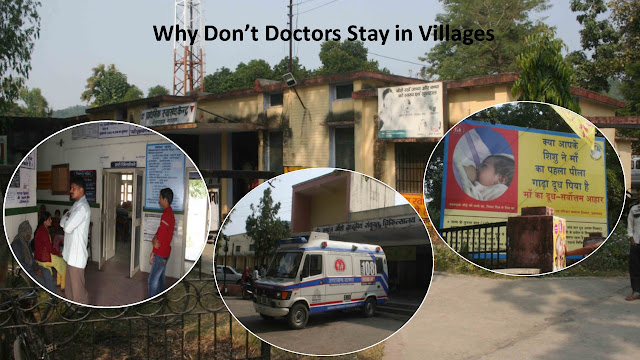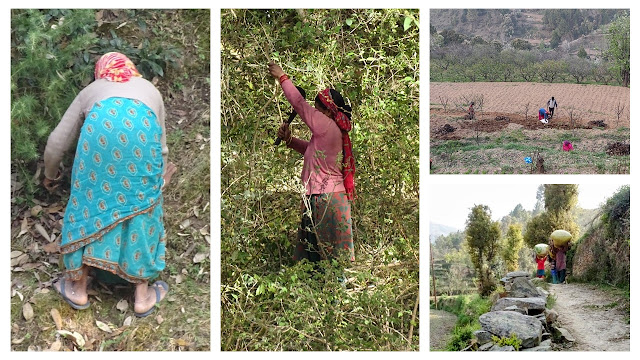Keep the Baul-Fakir Tradition Alive in West Bengal
The battlelines are drawn and getting deeper every day. The BJP is throwing in some mighty punches while the TMC is preparing for rear-guard action as many of its stalwarts are deserting the mothership. The Congress and the erstwhile Left Front have joined forces after having been bitter enemies during the long years of the Left Front rule in West Bengal. BJP moved early when it launched its Mission Bengal in early November last year. Within a month TMC intensified its outreach through the Duare Sarkar (Government at your doorstep) programme. There is already news of many scuffles. The BJP president’s convoy was attacked last month when he and other leaders were on their way to a meeting near Kolkata. It promises to be a long and bitter struggle till voting takes place in the first half of this year.
Hindutva, Voting and Politics of Contestation
Voting is a political act, but in India, citizenship is being
increasingly conflated with cultural identity. India being a vast and varied land,
‘Hindutva’, soft or hard, is now seen as the most potent means of unifying this
diverse political landscape. The western states were the first to fall prey to
this, the central states followed. The southern states, it can be argued, with their
strong regional ethos, egalitarian traditions and greater religious diversities
have resisted the more North Indian
Gangetic version of Hinduism with Rama and Hanuman that Hindutva entails. Now its
battle-ground West Bengal with state elections due in early 2021.
There was a tectonic shift in electoral fortunes during the
last national elections in 2019 with BJP winning 18 out of 42 seats on the Hindutva
ticket. Mamata Bannerjee had upended 34 years of rule by the Left Front when
she won the state elections 2011. The egalitarian rhetoric of the Left Front
has over the years been assimilated by the TMC. However, many well-meaning people
feel that governance at least at the lowest levels has been infected with the
same rot of amorality, corruption and violent
retribution against
perceived and actual opponents. This is what exactly what had happened, they
say, in the later years of Left Front Rule providing space for TMC to gain
ascendancy. The same well-meaning persons also feel that TMC has been indulging
in perverse vote-bank politics through ‘muslim appeasement’.
The Hindutva agenda harks back to a glorious past and a
tradition pre-dating the arrival of Muslim conquerors. This forms the core of
the exclusionary logic of Hindutva. The TMC Supremo’s assertion of ‘muslim
appeasement’ perversely reinforces the same dichotomous logic. The bigger
question during this round of election is whether this dichotomous approach
will be sufficient to push back against the more exclusionary but politically
unifying logic of ‘Hindutva’?
Voting is a contest and about victory and loss. It makes
electoral politics perfectly amenable to a binary framework. Constitutional
imperatives of equity, equality, solidarity and rights are rarely used as
political logic in India. Instead, caste-based claims and kinship relationships
are more important as electoral considerations. The Hindutva logic aims to
undermine solidarity between the economic underclass by creating a perception
of persecution among the Hindus who are a numerical majority. Citizenship is
sought to be defined through a religious-cultural identity rather than by
constitutional logic. This defines
politics and by extension citizenship as a ‘contest’ defeating the shared
aspiration of a constitution.
Constitutional Aspirations Revisited
But politics in India is also about consensus and coalition.
In many states and at the national level coalitions are in favour and even BJP
accommodates partners in the NDA. The way forward for political parties opposed
to BJP has often been to also lay claim to the Hindu identity. The Congress has been alleged of using
this ‘soft Hindutva’ approach repeatedly. Even the Aam Admi party as been alleged to use this approach
to appeal to a ‘Hindu’ vote bank. Caste and religion-based vote bank politics
sharpen dichotomous divides and have been
useful for parties to negotiate the hustings. However, it is time for
the political process to reclaim the Constitutional imperative within the
electoral process. This will require putting citizenship at the centre and
claiming common ground between citizens of all hues rather than reinforce differences.
If the Constitutional imperative is not brought back into focus India will slip
back many centuries into the time when there was no separation between church
and state.
The logic of religion which led to the partition of India at
independence, did not hold good in Pakistan which chose to be an Islamic republic,
when Bangladesh was formed. India which opted to be a secular republic now
seems headed in the direction with the increasing popularity of the ‘Hindutva’
logic at the hustings. The coming elections in West Bengal can prove to be a
particularly significant milestone in the preservation of Constitutional values,
either as a roadblock to its decline or as another push on the accelerator speeding
its descent.
Today we are at an important juncture. All of us who believe
that Constitutional morality is the underpinning of citizenship need to revisit
our own political choices. Unfortunately, the mechanism of voting creates
victors and losers. Democracies are supposed to provide platforms for diverse
opinions, debates and dissent using the framework of Constitutional morality.
There is process of renewal through the electoral process. However, the
juggernaut of ‘Hindutva’ , abhors debate and discussions and is substantively
different from the universal ethos of Vasudhaiva kutumbakam found in the
Rig Veda and Upanishads. If the election in West Bengal is fought on the basis
of divisive values of Hindutva and muscular contests, the tradition of
political renewal through debate, dissent and the electoral challenges may well
be lost. It is vital that values of solidarity, compassion, and vasudhaiva
kutumbakam are integrated into the political process because they resonate
with the articulations of the Indian Constitution.
Reclaiming a Syncretic Bengali Identity
West Bengal is a border state. Its border is with Bangladesh,
a country where people also speak Bengali but in contrast the population there
is mostly Muslim. Many in West Bengal and in Bangladesh have their ancestry in
the other country. A significant proportion of the population in West Bengal is
also Muslim. These diverse regional and religious identities of the Bengali
were once represented in the football ground in Kolkata maidan through clubs
like Mohun Bagan, East Bengal and Mohammedan Sporting. Today while the first
two are flourishing within a corporate friendly eco-system, the third of the
famous trio has not surprisingly been less fortunate.
When I was young the football field was a battle ground but
outside it the rivalry between fans of different clubs was friendly banter and
joust. They were many similar ‘ghoti’ ‘bangal’ jibes which no one took very
seriously. The Bangals took their Purbo- Bango identity very seriously.
I remember the large crowds which welcomed Bongobondhu Mujibar Rahaman when he
came to Kolkata after the liberation of Bangladesh. I was then a schoolboy and was part of the
crowd that lined VIP Road in February 1972. If I remember correctly, and my
memory is probably tinged with my own romantic vision, there was a sense of
pride that ‘India’ had defeated ‘Pakistan’ and that a new Bengali speaking
nation has been created.
Having been born in India and having lived a large part of my
childhood and adulthood outside Kolkata I have been very intrigued by my Purba
Banga ancestry. My family three generations ago lived in the Chattogram
(Chittagong) area which has been a port from time immemorial. I have often
speculated whether I could be of mixed ancestry from the sailors who came to
this port from different regions across the world. Ibn Batuta from Morocco is
said to have come here, and it was frequented by the lashkars from middle
east and the olondaj from Europe. I have convinced myself that my physiognomy is
testimony to this miscegenation. This mixture of Europe and India, of Islam
Hinduism is visible if one comes down the Hooghly river from
Bandel to Howrah. I
feel that the unifying and exclusionary ideology of Hindutva, which seeks
reinforcement through electoral contest and political consolidation is a
serious threat to the hybrid vigour and social solidarity which embodies the Bengali
ethos.
This syncretic Bengali ethos is all around. The favourite
food of Kolkata is the biriyani. The argument is which Muslim owned eatery
makes the more delectable one. Rezala and chaanp are on an equal
footing with sondesh and rosogolla as perennial favouries. During
Christmas Park Street is as resplendent as any of the more well-known pandals
during Durga Pujo. Lalon Fakir is an icon across both sides of the
international border. He has a far recent history than Kabir, and is probably more popular in contemporary times. Kazi Nazrul Islam
is considered second only to Rabindranath Tagore as a poet and there are
numerous literary giants with Muslim names. Satya Pirer Panchali is a heroic
ballad similar to the ‘chalisa’ or religious Hindu ballad or hymn of North
India. Here the ode is to an Islamic sufi saint uses the same style as the one
to the Hindu goddess Lakshmi (Lokkhir Panchali). This medieval ballad is still
sung, and I have heard it at Poush Mela in Shantiniketan, where
Bauls and Fakirs,
medicants from the Hindu and Islamic tradition sing in turns on the same stage.
In Bengal even if one goes to a time before the Islamic
influence began, there was a vigorous Buddhist tradition. The North Indian
Gangetic version of Hinduism, much is in favour now, does not find much
historical reference.
West Bengal is state of many other diversities as well. The
old favourite Ganguram sweets was set up by a halwai from Varanasi in UP.
Chhana, or curdled milk without which it is impossible to imagine the
sweet-toothed Bengali, is supposed to be of Portuguese origin. Jamini Roy’s
paintings as well as Ramkinkar Baij’s famous sculpture illustrate how the
Santhal peoples are central to their imagination of Bengal.
West Bengal is a world into itself, rising from the sea to
the mighty Himalayas. The Gorkhas who live in Darjeeling, Kurseong and
Kalimpong and speak Nepali are as much a part or cultural West Bengal as the chau
dancers of Purulia. It would be a tragedy to stifle this vibrancy of West
Bengal with the saffron monochrome of Hindutva.
Bengalis revere Rabindranath. Rabindranath represents a
globalised humanist tradition. A tradition which is under threat from Hindutva
and similar dichotomous ideologies. The elections which are around the corner
in 2021 need to be framed beyond the partisan logic. The discerning voter in
West Bengal needs to see beyond the symbols of the grass roots or the lotus flower
or the hammer and sickle and the hand. They need rise above the slogans of Ma
Mati Manush or Jai Sri Ram or Inquilab Zindabad and find causes
and images which resonate with the more human values of fellowship, based on solidarity,
diversity, and syncretism. In 2020 the Poush Mela was cancelled because of the
Covid pandemic but the various syncretic traditions are alive in all corners of
the state. It will not take much effort to highlight them and reinforce our
common identity. Otherwise, we stand to lose. The fakirs may not sing with the
bauls, anymore.




This reflects how the Bharat Jalao Party is desperate to win Bengal at any cost, by destroying it's syncretic, plural & all accepting culture.
ReplyDeleteLoved this one - cant get enough of the syncreticism of our culture. Good for you and please keep writing in this vein. We need it at this political moment. Thanks
ReplyDelete